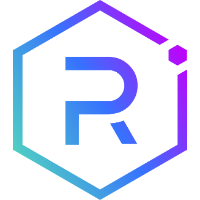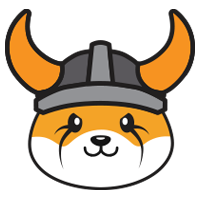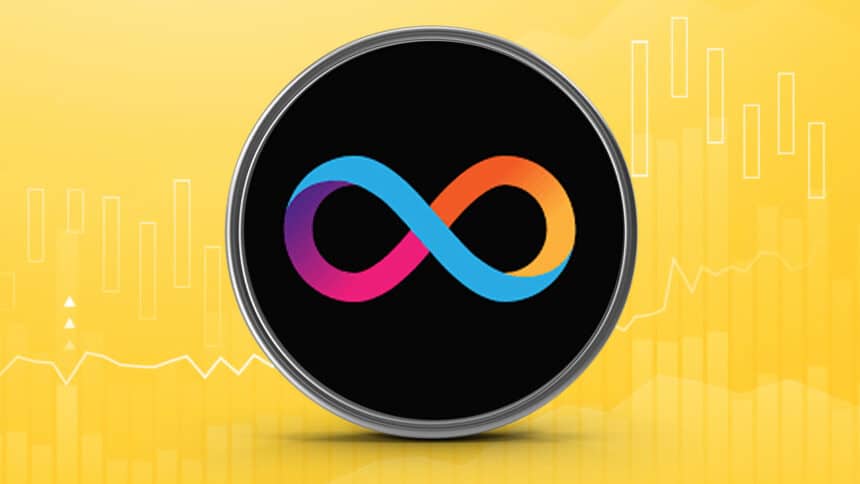







































Top 7 AI Crypto Coins in 2025
 AI
AI
 AKT
AKT
 ICP
ICP
 TOP
TOP
 AIC
AIC
Post 2010 world has seen two of the greatest inventions- cryptocurrencies and artificial intelligence (AI)- that have redefined our lives forever. While one invention (crypto) has redefined traditional finance, the other (AI) has changed how we work today.
With dramatic technological advances, we are now seeing an amalgamation of these technologies- blockchain and AI.
These milestones range from the development of smart contracts and decentralized applications to the introduction of AI-enabled crypto coins. The integration of AI into the crypto space is rapidly gaining momentum, driven by its remarkable potential to significantly enhance user experience, boost scalability, and fortify the security of blockchain applications. Many experts feel that AI crypto coins are the future of cryptocurrencies.
Many engrossing projects dealing in AI cryptocurrencies are coming up. These projects offer innovative services like virtual reality, gaming, and GPU processing systems. The below-mentioned AI crypto coins have taken the game to the next level by providing captivating services.
Importance of AI Crypto Coins
AI crypto tokens seamlessly blend artificial intelligence with blockchain technology, significantly enhancing scalability, security, and automation. This innovative integration captivates investors who recognize the transformative potential of real-world AI applications, leading to a surge in market confidence.
AI cryptocurrencies, after analyzing previous market trends and future perspectives, can suggest personalized investment advice. They also help in enhancing the security of the transactions. Furthermore, they can help in creating a new phase of automated financial services.
The AI-enabled cryptocurrencies discussed below offer various services that can easily align with different investment strategies and goals.
Top 7 AI Crypto Coins
7. Akash Network

The Akash Network Token (AKT) is created by The Akash Network. It is led by Greg Osuri, the CEO and co-founder. The team’s goal is to establish a decentralized cloud computing marketplace that utilizes blockchain technology to offer a more efficient, secure, and cost-effective solution for both users and providers of cloud resources.
Key Features:
- The Akash Network leads in energy efficiency compared to traditional cloud services, utilizing a proof-of-stake consensus mechanism that is more environmentally friendly than the energy-intensive proof-of-work used by many other blockchains.
- Akash Network, built on the Cosmos SDK, is a blockchain-agnostic platform that enables seamless integration with various networks, fostering dynamic cross-chain collaborations.
- Akash Networks offers an open marketplace, which allows anyone with computational resources to become a cloud provider. Users can lease out their unused computing capacities, fostering competition and driving down prices.
Where to buy the Akash Network Tokens?
Centralized crypto exchanges let one swap AKT tokens. Gate.io is the most often traded exchange for buying and trading Akash Network. Other often-used choices include KuCoin and Kraken.
6. The Graph

The Graph Token (GRT) was developed by Yaniv Tal, Jannis Pohlman, and Brandom Ramirez. It is a decentralized protocol for indexing and querying blockchain data. The protocol makes it easy for developers to get to blockchain data and use it. It works especially well for decentralized apps (dApps) that need to get data from blockchains like IPFS and Ethereum.
Key Features
- The Graph organizes and serves web3 data, which allows the users fast and simple access to blockchain data.
- The Graph makes it easy and safe to explore data on blockchains like Ethereum, which is critical for decentralized apps (dApps) and the DeFi industry.
- There are various participants in the network—including indexers, curators, and delegators—who are motivated by native GRT tokens.
- Cross-platform interoperability made possible by the Graph lets data be indexed and searched across many blockchain systems.
Where to buy The Graph Token?
Centralized crypto exchanges let one trade GRT tokens. Binance is the most often used exchange for buying and trading The Graph. MEXC and Coinbase Exchange are also really well-liked choices.
5. Artificial Superintelligence Alliance

Through a token merger, Fetch.ai, Ocean Protocol, and SingularityNET form Artificial Superintelligence and keep trading under the $FET token.
This alliance aims to accelerate the advancement of decentralized artificial general intelligence and artificial superintelligence.
Key Features
- Research and development projects aiming to enhance distributed artificial general intelligence (AGI) and artificial superintelligence (ASI) are funded by ASI token money.
- The ASI token lets data be indexed and searched across several blockchain systems, therefore enabling smooth interaction between several networks.
- Accessing AI-driven services such as chatbots, digital companions, and other AI apps mostly requires the ASI token as the payment method.
- Staking their ASI tokens allows token holders to engage in network governance, vote on ideas, and change the course of the ecosystem.
Where to buy the Artificial Superintelligence Alliance?
Centralized crypto exchanges let one swap FET tokens. Gate.io is the most often used exchange for buying and exchanging the Artificial Superintelligence Alliance. Other often-used choices include OKX and KuCoin.
4. Render

From 3D rendering to machine learning and generative artificial intelligence, the Render Network (RENDER) is a top distributed GPU computing platform. The network links artists and developers seeking to scale demanding 3D rendering work and machine learning applications in the cloud with node operators wishing to monetize their idle GPU compute capability. The Render Network reaches hitherto unheard-of degrees of size, speed, and financial efficiency by use of a distributed peer-to-peer network.
Key Features
- Render’s decentralized supply links idle GPU resources to artists and developers needing to scale intense 3D rendering tasks and apps to the cloud.
- High-performance workloads include 3D rendering, machine learning, and generative artificial intelligence applications, which are what set Render apart from other crypto tokens.
- The platform offers scalable rendering features, which speed up and lessen user costs by means of rendering operations.
- Among the several uses the platform supports are augmented reality, virtual reality, and 3D modeling.
Where to buy Render Token?
One can trade RENDER tokens on centralized crypto markets. Binance is the most often used exchange to buy and trade Render. Other often-used choices are Coinbase Exchange and Gate.io.
3. Bitterson

Bittensor (TAO) was founded by Jacob Steeves and Ala Shaaban in 2021. It drives a distributed, blockchain-based machine learning network.
Bittensor’s ultimate goal is to establish a market for artificial intelligence, therefore enabling producers and consumers of this good to engage in a transparent, open, trustless environment. Promoting open access/ownership, distributed governance, decentralized governance, and global access to computing power and creativity inside an incentivized framework, Bittensor offers a fresh approach for creating and spreading artificial intelligence technology.
Key Features
- Bittensor enables machine learning models to train collaboratively across a decentralized network. Participants are rewarded in TAO tokens based on the informational value they provide.
- The native cryptocurrency, TAO, incentivizes participation and contribution to the network. It has a fixed total supply, similar to Bitcoin.
- Bittensor’s protocol allows for open access and ownership, promoting decentralized governance and the use of globally distributed computing resources.
- The platform fosters a collaborative environment where machine learning models are trained and rewarded based on their contributions to the network’s intelligence.
Where to buy the Bitterson Token?
Centralized crypto exchanges let one trade TAO tokens. MEXC is the most often used exchange to buy and trade Bittensor. Other well-liked choices include Bitvavo and KuCoin.
2. Internet Computer

The DFINITY Foundation created the blockchain project Internet Computer (ICP). It seeks to enable backend software on the public internet, therefore turning it into a worldwide computing platform. Inspired by advances in encryption, the Internet Computer blockchain reevaluates blockchain design.
Without centralized traditional IT such as cloud computing services, it offers the first World Computer blockchain that can be used to build practically any Web 2.0 online system or service and Web3 services. Smart contracts it hosts also allow direct transaction creation on other blockchains, therefore enabling the complete end-to-end decentralization of online services and Web3 for the first time.
Key Features
- Decentralized Cloud Computing: By letting developers create and run websites, apps, and other services straight on the blockchain—so removing the need for conventional IT infrastructure—the Internet Computer enables
- Smart Contracts: The platform supports smart contracts, therefore enabling the development of distributed apps (dApps) with autonomous running capability.
- The Internet computer’s seamless scalability allows it to handle increasing user and application counts without compromising performance.
- Threshold Relay is a fresh consensus mechanism designed to guarantee blockchain integrity and dependability, so it secures the network.
Where can I buy the Internet Computer token?
Centralized crypto exchanges let one swap ICP tokens. Gate.io is the most often-used exchange for buying and trading Internet computers. Among other well-liked choices are Binance and MEXC.
1. Near Protocol

NEAR Protocol Token (NEAR) is designed as a layer-one blockchain to offer a developer-friendly venue for distributed apps (dApps). Built for distributed applications, Near Protocol is a proof-of-stake Layer-1 blockchain. Nightshade’s technology was meant for quicker transactions, fewer expenses, and more volume of transactions overall. Nightshade breaks up the blockchains into smaller sub-chains with validators to handle transactions more quickly.
Key Features
- Using a novel sharding mechanism known as Nightshade, NEAR enables the network to retain cheap transaction fees while processing up to 100,000 transactions per second.
- NEAR provides human-readable account names, therefore facilitating user interaction with the blockchain rather than conventional encrypted wallet addresses.
- Doomslug, a consensus method used in the protocol, guarantees rapid and safe transaction finality.
- NEAR offers tools, documentation, and resources to enable developers to create and implement dApps fast and effectively.
Where to buy Near Protocol Token?
Consolidated crypto markets allow users to swap NEAR tokens. Binance is the most often used trading and purchasing tool for the NEAR Protocol. Other often-used choices include HTX and Azbit.
Future of AI Crypto Coins
By improving security, automating trading tactics, and customizing financial products, AI-enabled cryptocurrencies are likely to transform the financial scene. Real-time analysis of enormous volumes of data by artificial intelligence allows it to audit smart contracts, identify fraudulent behavior, and adjust trade decisions.
As AI technology improves, it will make blockchain transactions more efficient, provide us with more information about how the market will behave in the future, and lower the costs of transactions. These improvements will lead to more people using and adopting AI-powered cryptocurrencies in many areas. Blockchain, together with artificial intelligence, promises a more intelligent, safe, and effective financial ecosystem.
Also Read: AI Is Coming To DeFi To Eliminate The Cognitive Overload
Conclusion
The future of AI crypto coins is filled with immense potential. The amalgamation of artificial intelligence and blockchain technology is set to take crypto investments to the next level.
But better regulations and advances are absolutely necessary for wider adoption and increasing global financial standards.
Hence, it’s critical for investors to go through regulations and opt for those cryptocurrencies that align with their financial aim.

